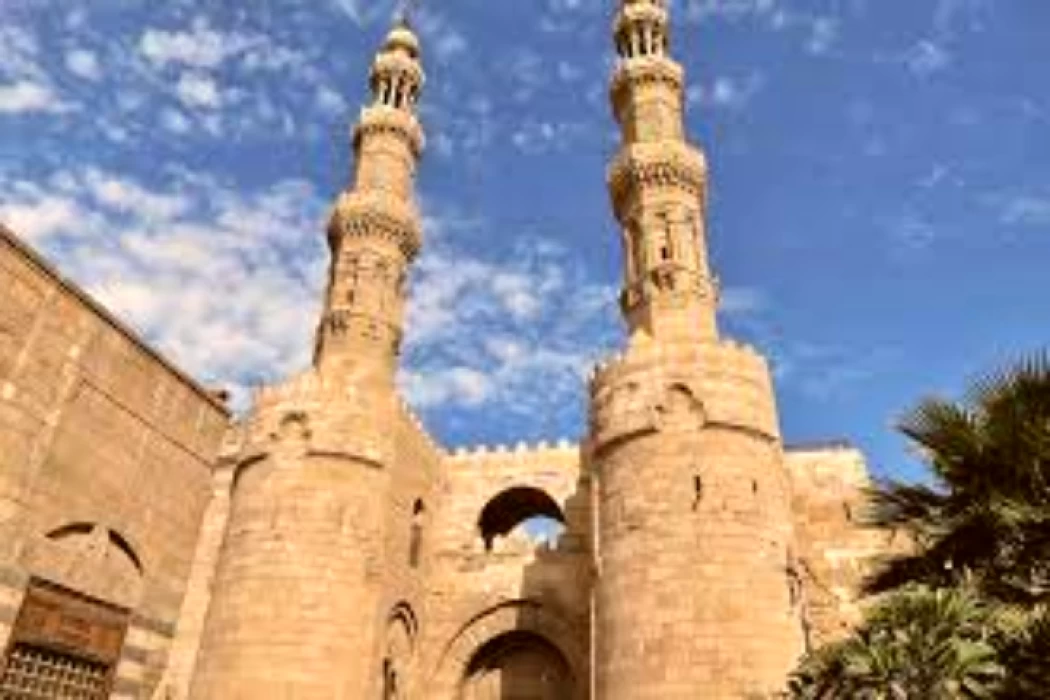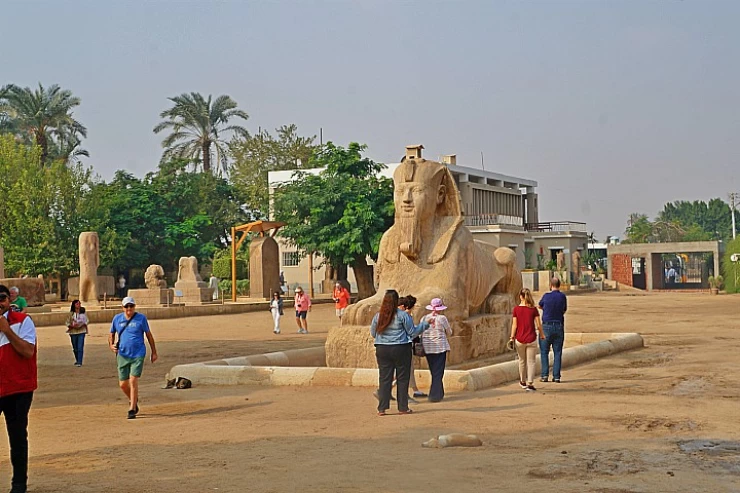
Bab Zuweila gate of Cairo
Bab Zuweila gate of Cairo
Below the two towers, which are more than 24 meters high and more than 25 meters wide, and their construction ended in 1092, the Zuwayla tribe from Tunisia settled in the company of Gohar al-Saqqali, the Fatimid commander, then this gate carried the heads of the Tartar messengers and Touman Bey, and embraced the hopes of many, but the area was tampered with by the hand of futility and neglect, and its wall was occupied by sellers of fabrics, antiques, plastic tools, books and a famous “foul” cart, which the public later called the gate of the Metwalli, because the Hisbah used to sit at it to collect taxes.
The southern facade of Bab Zuwayla consists of two round towers and an arch between them from which the whole of Old Cairo can be seen, carved from below, so that they form a knotted entrance, between them is a bridge that became a passage from a busy street, and the northern facade is a straight stone wall topped by a platform at a height of 9 meters, and south of it 3 knotted openings topped by another platform, while the original entrance to Bab Zuwayla was an L-shaped staircase, whose remains are still extant.
Bab Zuwayla is very famous because it is a museum-like tourist attraction that includes its composition, history, stages of restoration, and rare old photos, since Badr al-Din al-Gamali rebuilt the walls, as it was not subjected to a military attack in its history, but witnessed many commercial and religious activities, processions and celebrations, and was restored during the period from 1988 to 2003.
The door is famous for hanging the heads of the messengers of Hulagu, the leader of the Tartars, who came with a threatening message to Egypt, and were beheaded by Saif al-Din Qutz, which marked the beginning of the Mamluk state, before the last sultan of this state, Tuman Bay, was executed on it after the Ottoman army led by Selim I entered the country.
The name Bab Zuwayla was derived from the Berber tribe that came to Egypt with Gohar al-Saqqali and settled near it, and the public later called it al-Mutawalli Gate, because the Hisbah used to sit there to collect taxes.
Jawhar al-Saqali was asked by Caliph al-Mu'izz to identify a place to establish a capital to be the seat of Fatimid power, and an area of 360 acres was chosen to establish it and named Cairo.
Badr al-Din al-Jamali rebuilt Cairo's fortress, most of which had been removed by natural factors, and used stones from Pharaonic temples. Salah al-Din al-Ayyubi renovated the doors of the fortress and added eight others, including al-Shairiya, al-Wazir, and al-Bahr, so that Cairo then had about 15 doors with distinctive architecture from different Islamic eras.















